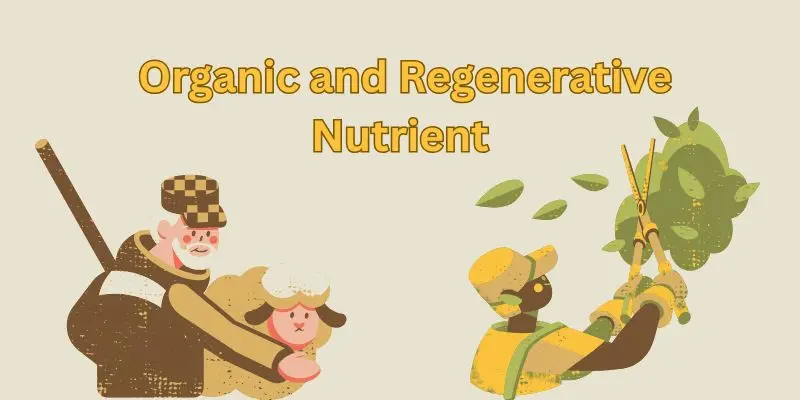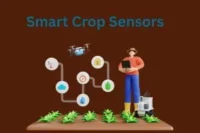Nutrient Management Plans – Feed the Soil, Fuel the Future
Published: 15 May 2025
Soil nutrient imbalance is a leading factor in global yield loss, with the International Fertilizer Association reporting that more than 50% of applied nutrients are lost due to inefficient use. A Nutrient Management Plan (NMP) provides a targeted, science-driven strategy to ensure crops receive the right nutrients at the right time and in the correct amounts. This approach not only maximizes productivity but also reduces input waste, improves soil health, and limits environmental harm from runoff and leaching.
What Is a Nutrient Management Plan (NMP)?
- A Nutrient Management Plan is a data-driven strategy that determines how much, when, and where to apply nutrients to crops.
- It’s based on soil testing, crop nutrient needs, and environmental conditions.
- The goal: maximum efficiency with minimal waste and environmental damage.

Why Nutrient Management Matters Now More Than Ever
- Fertilizer prices are rising, and overuse is not only costly but also damaging.
- Excess nitrogen and phosphorus lead to water pollution, soil acidification, and nutrient lock-up.
- A well-crafted NMP increases productivity while protecting long-term soil health.
- Emotional insight: “When every decision affects your yield, guessing is no longer an option.”
- SEO Keywords: fertilizer waste impact, sustainable fertilization, why nutrient planning is essential
Core Components of a Nutrient Management Plan
- Soil Testing: Identifies existing nutrient levels and deficiencies.
- Crop Nutrient Requirements: Each crop needs specific nutrients at each growth stage.
- Fertilizer Selection: Choosing between organic and synthetic sources based on goals and soil biology.
- Application Method and Timing: How and when to apply for maximum uptake (drip, foliar, side-dress, etc.).
- Environmental Considerations: Weather patterns, slope, water bodies, and runoff risk must be accounted for.
Farming Without a Plan: The Risk to Your Harvest
- Over-fertilization leads to burned plants, leached soil, and wasted resources.
- Under-fertilization results in weak crops, poor yields, and farmer fatigue.
- The uncertainty wears you down—each mistake feels like money lost and time wasted.
- Emotional trigger: “The soil holds the answers—but only if you learn to ask the right questions.”
Organic and Regenerative Nutrient Approaches
- Compost, green manure, and biochar enrich soil structure and feed microbial life.
- Cover crops like legumes add natural nitrogen while preventing erosion.
- Regenerative systems reduce dependence on chemical inputs and promote long-term resilience.

Smart Technologies and Tools for NMPs
- Soil moisture and nutrient sensors: Provide real-time data for more precise applications.
- GIS Mapping and GPS tools: Help identify nutrient-rich or depleted zones.
- Nutrient recommendation software: Converts soil data into actionable fertilizer plans.
- These tools reduce guesswork and maximize return on every unit of input.
How to Create Your Own Nutrient Management Plan
- Step 1: Conduct a lab-based soil test on different field sections.
- Step 2: Identify crop type, growth stages, and local climate conditions.
- Step 3: Match nutrients to crop demand curves.
- Step 4: Choose fertilizers that match your soil and sustainability goals.
- Step 5: Create a calendar of application based on timing and method.
- Step 6: Review results seasonally and adjust based on performance.
Real-World Benefits of an Effective NMP
- Increased yields due to balanced nutrition and healthier soil
- Reduced input costs with targeted application
- Improved soil organic matter and long-term fertility
- Reduced water pollution and better environmental compliance
- Emotional reward: “You finally stop chasing results—and start building them.”
Overcoming Nutrient Planning Challenges
- Resistance to Change: Many farmers stick with old habits due to fear of complexity.
- Lack of Testing Access: In some areas, labs and advisors may be out of reach.
- Cost of Precision Tools: Tech investment feels risky without guaranteed returns.
- Solution: Start simple. Use free or low-cost resources and expand as benefits grow.
Final Thoughts
- In farming, every decision leaves a trace—in the soil, in the harvest, and in the future you build. A Nutrient Management Plan isn’t just a technical strategy; it’s a commitment to understanding your land deeply and respecting what it needs to thrive. When you stop treating soil as just a surface and start managing it as a living system, you unlock its full potential. The health of your crops begins with the health of your soil—and with a thoughtful plan, both can grow stronger together, season after season.
Please Write Your Comments


`
Comments (0)

INSTRUCTIONS:
- Be Respectful
- Stay Relevant
- Stay Positive
- True Feedback
- Encourage Discussion
- Avoid Spamming
- No Fake News
- Don't Copy-Paste
- No Personal Attacks

INSTRUCTIONS:
- Be Respectful
- Stay Relevant
- Stay Positive
- True Feedback
- Encourage Discussion
- Avoid Spamming
- No Fake News
- Don't Copy-Paste
- No Personal Attacks





